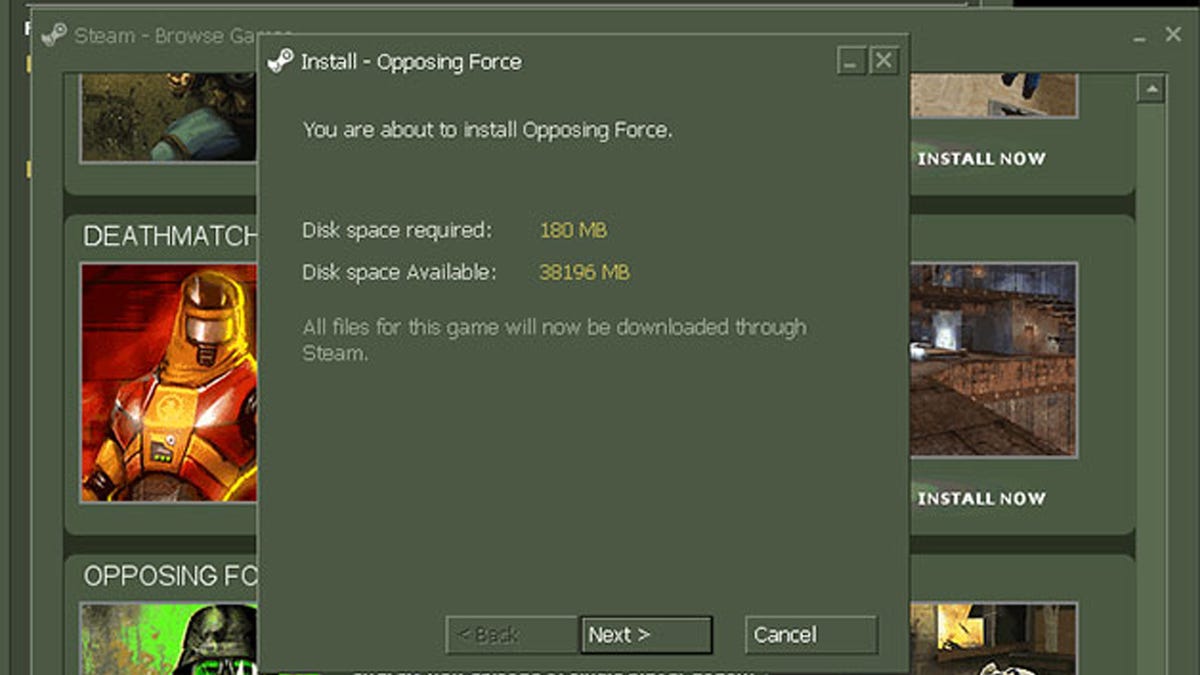Steam, the digital PC storefront, officially launched to the public 18 years ago today, on September 12, 2003. I didn’t realize just how old Steam was and by extension how old I’ve gotten. I guess time flies when your buying, downloading, and installing a bunch of games that you’ll end up never playing.
When Valve first launched Steam people, including a few of my friends at the time, weren’t super happy about it. The idea of having to register a game via the internet, even a game you bought at a store on a disc, didn’t sit well with folks. But over time, as Valve improved the service, offer third-party games, and began doing seasonal sales, people warmed up to it. In May of 2007, it had nearly 13 million users. As of January 2024, it has over 120 million active users every month.
When it launched in 2003, it was a bit a of disaster. Servers collapsed. Players couldn’t log in and there wasn’t much to be found when you did make it in besides a few Valve titles and a terrible-looking UI. Things have gotten better since then.
The first game to require Steam was Valve’s own mega-sequel, Half-Life 2. It was released in 2004. The following year, Valve began cutting deals with third-party publishers to bring the first non-Valve games to the service. The first third-party game released on Steam was Rag Doll Kung Fu. It’s still available in 2024. It’s an odd fighting game that was made by some Lionhead (Fable) devs. You can buy it today for the low price of $1.
In May of 2007, there are around 150 digital games available to purchase on Steam. Earlier this year, Steam hit 50,ooo games. It’s estimated that every year since 2018 between 8,000 to 10,000 new games are uploaded to the storefront.
G/O Media may get a commission
I went digging through my Steam library and as far as I can tell, based on my memories and release dates, the very first games I bought on Steam were Day of Defeat Source and Half-Life 2. That seems about right.
Today, Steam might face competition from Epic and other publisher stores, but it’s still easily the biggest and most popular way for most PC gamers to get new games. But back in 2003, Steam seemed like a weird experiment from those Counter-Strike and Half-Life devs.
Kotaku
Source link
Related Post:
- Max Payne turns 20 years old today • Eurogamer.net
- Resistance 3 turns 10 years old • Eurogamer.net
- Sonic the Hedgehog is 30 years old today • Eurogamer.net
- The Still Excellent Persona 3 Is 15 Years Old Today
- Nintendo’s Game Boy is 32 years old today
- Shenmue 2 turns 20 today • Eurogamer.net
- The Nintendo 64 Is Now 25 Years Old
- Street Fighter II’s Zangief Is Now 65 Years Old
- Random: Remember That Zelda HD Tech Demo For Wii U? It’s Now 10 Years Old
- The Old Republic Celebrates 10 Years by Announcing Legacy of the Sith Expansion
